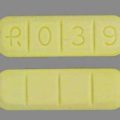Ativan is a brand name for lorazepam a class of prescription drugs known as benzodiazepines (benzos). Ativan is approved for use in treating anxiety, insomnia, and certain types of seizures; it may also be used as well as a pre-procedural sedative. Ativan use carries a risk of physical dependence, even when used under a doctor’s supervision on a prescribed dosing schedule.
Ativan is classified by the DEA as a Schedule IV drug, which means its use may be associated with abuse and dependence. Ativan addiction may be, in part, driven by the tolerance that builds to the sedative effects of the drug. As you adapt to the effects of Ativan, you may find yourself wanting more and more of it to keep feeling the same sensations that the drug gave you when you first started taking it. Physical dependence and attempts to avoid the associated withdrawal syndrome can also contribute to and maintain compulsive misuse of Ativan. If you’ve become physically dependent on Ativan and stop taking it, you may be at risk of experiencing the characteristically unpleasant signs and symptoms of benzodiazepine withdrawal.
Ativan Withdrawal Symptoms and Timeline
Empirical research investigating withdrawal from benzodiazepines like Ativan indicates that the process is one that occurs in stages, and that withdrawal from a serious Ativan use disorder can be potentially fatal due to the development of seizures.
It is generally accepted that Ativan withdrawal occurs in two stages:
- Acute withdrawal: Due to the drug’s relatively short half-life, there can be withdrawal symptoms within 24 hours of discontinuation. The average onset of withdrawal symptoms is longer and occurs typically between 3-4 days following discontinuation of Ativan. Acute withdrawal from Ativan often consists of a rush of anxiety, increased heart rate, increased blood pressure, and difficulty sleeping. The rush of anxiety is often referred to as a rebound effect. A rebound effect occurs when symptoms that the medication was initially designed to reduce (in this case anxiety) return once the person discontinues the medication. A number of other symptoms may be present during acute withdrawal.
- Neurological symptoms, such as headache, shakiness or tremors in the hands, confusion, mental dullness, and profuse sweating may be present. There is also a potential to develop seizures. The development of seizures during acute withdrawal can be potentially fatal, and any sign of seizure activity requires immediate medical attention.
- Cardiovascular symptoms, such as increased heart rate or increased blood pressure, may occur.
- Gastrointestinal issues, such as nausea, vomiting, stomach cramps, an inability to eat, and weight loss, may be present.
- Psychological symptoms, including cravings for Ativan, mood swings, depression, and anxiety, may occur.
The acute phase of withdrawal will typically last between 5 days and 4 weeks. Symptoms will typically peak within 2 weeks and then begin to decrease in intensity.
- Protracted withdrawal: This phase may last 10-14 days, although, for individuals using very high amounts of Ativan, it can conceivably be longer. The symptoms are significantly reduced in both their intensity and number but can still consist of issues with anxiety and depression, cravings for the drug, upset stomach, headache, and flulike symptoms.
In some cases, individuals experience a return of severe anxiety following protracted withdrawal. When there is a significant return of anxiety following protracted withdrawal, some researchers label this as the third phase of the withdrawal process from Ativan and other benzodiazepines. In addition, a subset of individuals may continue to experience issues with decreased motivation, apathy, mood swings, and other psychological issues for months or years after they have stopped taking Ativan (sometimes, this is referred to as post-acute withdrawal syndrome).
Treatment for an Ativan Use Disorder
The major issue with trying to discontinue Ativan or any other benzodiazepine once a person has developed a substance use disorder to this class of drugs is the inevitable experience of the withdrawal syndrome. Because one of the quickest ways to stop the withdrawal symptoms is to take more Ativan, it becomes extremely difficult for many individuals to negotiate the early stages of recovery from an Ativan use disorder. The negative withdrawal symptoms and increased cravings for Ativan result in individuals relapsing rather quickly. The chances of success in recovery from an Ativan use disorder are greatly increased by utilizing a formal treatment approach that includes a medically assisted detox program.
The major components of a successful recovery program from an Ativan use disorder will typically include the following:
- A formal detox component that is supervised by a psychiatrist or addiction medicine physician should be part of the program. This component can be either an inpatient or outpatient program but will require that the individual receive medical supervision to assist with the withdrawal process. One strategy involves a physician-supervised tapering program that slowly tapers down the dosage of Ativan or uses another benzodiazepine to slowly wean the person off benzos. This allows for the individual system to adjust to decreasing amounts of Ativan in their system and reduces the intensity of the withdrawal process. Other medically assisted treatments may be required throughout the entire recovery process to address other situations, such as psychological problems or medical conditions, that need treatment.
- The formalized treatment program will need to include some form of counseling or therapy designed to discover and address the issues that led to the substance use disorder, assist the client in developing new ways to cope with these issues, and continue to address other issues that may be present. Therapy can be delivered in an individual, group, or combined individual and group format. For individuals with domestic issues, family therapy is also an option.
- There should be an option to participate in support groups, such as 12-Step meetings or other peer support groups. Support group attendance offers the potential for extended care once the more acute phases of treatment and therapy have been completed. Because therapy is typically not an ongoing situation but is time-limited, individuals need some type of long-term involvement in order to address situations that could trigger relapse over the longer term. Support groups are good sources for long-term aftercare and treatment.
- Any other supports or services that the individual needs, such as occupational therapy, vocational counseling, etc., should be included in the treatment package.
Withdrawal Remedies
A big question a lot of people have is whether or not there is Ativan withdrawal medication that can be taken, particularly during an Ativan withdrawal peak. The answer to this question is mixed. There is currently no drug that’s specifically approved for Ativan withdrawal treatment, but that doesn’t mean there are no treatment options.
During a medically-assisted detox, a person is going to have a lot more treatment options that can help lessen the symptoms they’re experiencing, particularly at the Ativan withdrawal peak. A medical team is going to be able to not only monitor the entire detox process, but they’re also going to be able to make necessary medical interventions and make sure the process doesn’t become life-threatening. For example, some detox programs might utilize not just the tapering process, but also the use of other, less powerful benzodiazepines with longer half-lives during detox. The result is that the person is better able to wean off the primary drug which is Ativan.
There can also be treatments administered for co-occurring disorders, and in some cases, there may be natural herbal remedies or supplements that can help the process of withdrawal from Ativan.
What anyone who is abusing Ativan should understand, however, is that these aren’t treatments or home remedies they can do at home, themselves. They’re medical remedies that should be administered in the proper setting and with the right supervision.
Just with the tapering-off method alone, people need to have doctor supervision. Only a physician can determine the right amount of Ativan to begin with, and then how to gradually move the dosage down throughout the detox process. The tapering down process can be complex, particularly if other addictions are involved, and it can take anywhere from a few weeks to a few months.
Ativan (lorazepam) Addiction Detox Process
When someone is addicted to benzodiazepines including the potent Ativan (lorazepam), they will often require medically-assisted detox during their journey to stop using them. The medically-assisted detox protocol for Ativan and other benzodiazepines can help reduce the severity of withdrawal symptoms and make people more comfortable as they detox. Medical detox programs are also best because a team of professionals can provide constant monitoring, and if necessary, interventions if something severe happens or symptoms become life-threatening.
The most common course of action in an Ativan detox protocol is to wean the person off the drug. A detox center will work with the patient to determine the right dosage to begin the process with, and will also outline a plan for slowly tapering that dosage down over time, which can take weeks or months.
What happens in the general sense during a drug detox is that your body begins to be able to eliminate toxins and move back toward a more reasonable level of functionality. Along with the general medical problems and risk of death that can occur with a home detox as opposed to a rehab center and medical detox, the uncomfortable symptoms that occur through Ativan withdrawal can lead to a higher likelihood of relapse. When someone experiences the Ativan detox symptoms in a medical detox center, they’ll have the support and therapeutic resources that can help them avoid this tendency.
Many medical detox programs can provide supportive services such as cognitive behavioral therapy as well as psychiatric treatment, which helps people cope with Ativan withdrawal in a holistic way that’s more likely to lead to better outcomes.
The first step in how to safely detox from Ativan will likely be the creation of an individualized tapering schedule. There are different recommendations as to the best way to detox from Ativan that can include moving to taking the same dose of a less potent benzodiazepine, to using smaller doses. Withdrawal symptoms will start within a few days. During the Ativan detox protocol, some medications may be used to deal with the Ativan detox symptoms, including drugs that can prevent seizures.
Many people also wonder how long does it take to detox from Ativan. There’s no definitive answer to this question, although recommendations in medical journals for the ideal Ativan detox protocol range anywhere from 4 to 10 weeks. That is a lengthy detox protocol compared to many other drugs, but that is due to the tapering schedule, which is safer than cold turkey methods.
Detox for Ativan can occur in an inpatient or outpatient programs, but outpatient programs may not be advisable for someone who has been taking high doses of the drug, because of the likelihood their withdrawal symptoms could be very severe.
Inpatient medical detox programs are often best for long-term and heavy Ativan abusers, and your care providers will create a personalized detox and tapering down the schedule for your individual needs.
Following detox, you’ll then move toward comprehensive rehabilitation and treatment that will address things such as the underlying factors leading to your abuse of Ativan. There will be a combination of both emotional and physical therapies, and you’ll learn coping skills to help you deal with triggers in your life. The first stepping stone to a successful treatment program for Ativan abuse is a medical detox program. SEE: How Long Does Ativan [Lorazepam] Stay In Breastmilk





